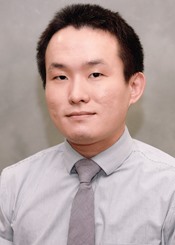Program Information
Efficient Dose Extinction Method for Water Equivalent Path Length (WEPL) of Real Tissue Samples for Validation of CT HU to Stopping Power Conversion
R Zhang*, E Baer , K Jee , G Sharp , J Flanz , H Lu , Massachusetts General Hospital and Harvard Medical School, Boston, MA
Presentations
SU-F-J-193 (Sunday, July 31, 2016) 3:00 PM - 6:00 PM Room: Exhibit Hall
Purpose:For proton therapy, an accurate model of CT HU to relative stopping power (RSP) conversion is essential. In current practice, validation of these models relies solely on measurements of tissue substitutes with standard compositions. Validation based on real tissue samples would be much more direct and can address variations between patients. This study intends to develop an efficient and accurate system based on the concept of dose extinction to measure WEPL and retrieve RSP in biological tissue in large number of types.
Methods:A broad AP proton beam delivering a spread out Bragg peak (SOBP) is used to irradiate the samples with a Matrixx detector positioned immediately below. A water tank was placed on top of the samples, with the water level controllable in sub-millimeter by a remotely controlled dosing pump. While gradually lowering the water level with beam on, the transmission dose was recorded at 1 frame/sec. The WEPL were determined as the difference between the known beam range of the delivered SOBP (80%) and the water level corresponding to 80% of measured dose profiles in time. A Gammex 467 phantom was used to test the system and various types of biological tissue was measured.
Results:RSP for all Gammex inserts, expect the one made with lung-450 material (<2% error), were determined within ±0.5% error. Depends on the WEPL of investigated phantom, a measurement takes around 10 min, which can be accelerated by a faster pump.
Conclusion: Based on the concept of dose extinction, a system was explored to measure WEPL efficiently and accurately for a large number of samples. This allows the validation of CT HU to stopping power conversions based on large number of samples and real tissues. It also allows the assessment of beam uncertainties due to variations over patients, which issue has never been sufficiently studied before.
Contact Email:

